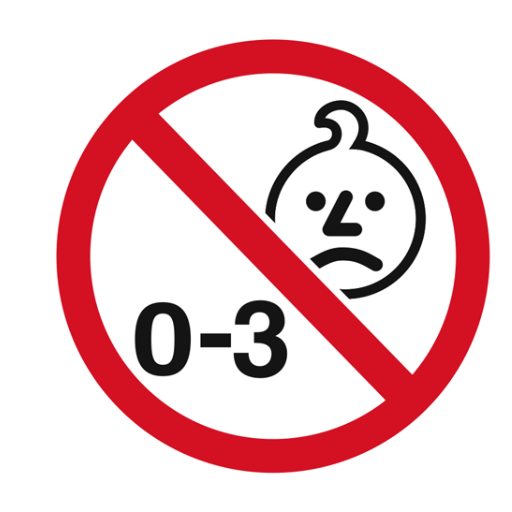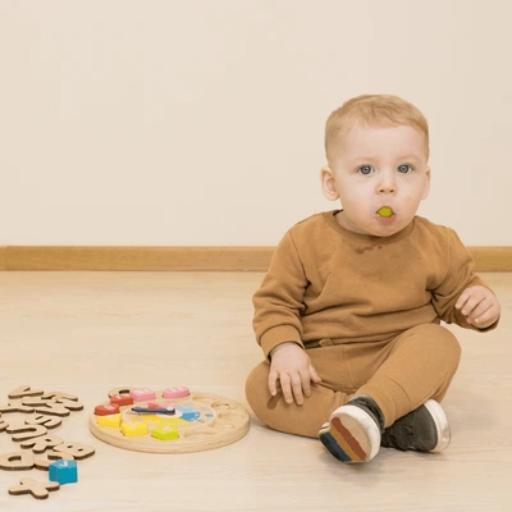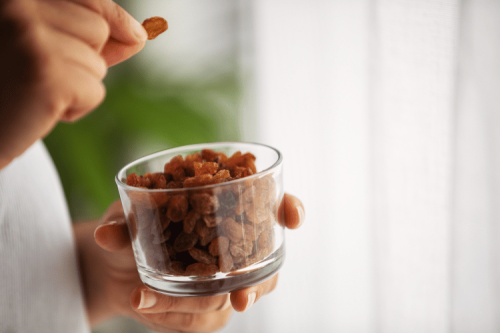
Choking on items is a severe problem that is not discussed often. It is mainly a problem for toddlers and other similar individuals. The article in your hand is an in-depth account of the small essentials surrounding choking risks, such as which objects or food cause the most incidents, biological reasons for an individual to choke, or even the preventive steps one should take. Learning how people choke and the signs accompanying suffocation to reduce choking instances would be handy across all areas, such as houses and schools. Assuming you are a parent, a guardian, a teacher, or someone who is just eager to eliminate threatening chances, this document provides the tools and knowledge required for securing such environments.
What Constitutes a Choking Hazard?

Obstructions in breathing often occur due to foreign objects or food entering the airway, which blocks airflow and poses a danger to one’s life. While such obstructions can be caused by various everyday items such as hot dogs, nuts, sweets, small toys, or parts, they can also be caused by items less than 1.25 inches in size, which are usually easy for children to swallow. The primary victims of such incidents, however, are children aged three and below or people who have trouble swallowing. Choking accidents can be prevented by reducing the chances of such hazardous materials being available.
Defining a Small Part
The Board focuses on how the standard for “small part” is illustrations set by the technical safety standards of the CPSC. A small part is any object that fits entirely into the small parts test cylinder. The small parts test cylinder has a standard diameter of 1.25 inches (31.7 mm) and a depth of 2.25 Inches (57.1 mm). These dimensions approximate the size of a child's upper airway and assist in identifying if an item is a choking hazard. Children’s items that fit through this cylinder would be through this classification as bolstering them into any shape is a major choking hazard, especially for children aged below three years. This classification also includes the risk of conventional or detachable parts if they exceed the set parameters, as these can break off from large ones while playing with them.
Why are Toys a Concern for Children Under 3?
From a manufacturing point of view, children aged below 3 have a high risk of harm from toys, even due to choking hazards, dangers of toxicity, and even poor design. Children of this age tend to put every object into their mouths, which increases the chance of some small part being swallowed or getting blocked in the trachea. Thus, restrictions such as those set by CPSC cover specific areas. For instance, any toy or part designed for this age group should not slide down a small parts test cylinder. Moreover, they should not contain lead, phthalates, or other banned toxic materials as per ASTM F963 provisions. Also, the edges and points of toys should not be sharp to result in cuts or deep skin tearing. Such rules are essential for minimizing risks relating to toys or other products for toddlers.
The Role of Consumer Product Safety
Preserving children, especially those below 3 years of age, from potential injuries, strangulation, and other health problems caused by toys can be achieved through the effective safety regulations of toys. The Consumer Product Safety Commission (CPSC) watchdogs harsh policies to control risks effectively. According to CPSC standards, no toy parts should be less than 1.25 inches in diameter and 2.25 inches in length (Small Parts Regulation) to avoid the choking problem. Furthermore, adhere to the following guidelines regarding hazardous substances in toys regulated by the act ASTM F963: lead painting (permissible limit 90 ppm), lead, and phthalates limit (standard 0.1% in PVC). Children should also be encouraged to use noncurrent-drawing shock-type devices.
The toxicity of children's toys can also be controlled during construction, as outlined in the Federal Hazardous Substances Act (FHSA), via mandatory labeling to mark correct age limits of safe usage and hazards. Another preventative function of consumer product safety is submitting optimization techniques of strength during testing tools, such as tension and twisting artifacts. In conclusion, these measures and education campaigns try to reduce the risks and ensure that any product released on the market is safe for young children.
How to Identify a Choking Hazard Warning Label?

To locate a Choking Hazard Warning label, look for bold phrases like ‘Warning – Choking Hazard’ carved out on the packaging. Such labels are particular about the reason for the hazard, such as small parts, marbles, or balloons, and even recommend an age suggesting that the product is not recommended for children below the age of 3 years. The label is placed near age grading and is accompanied by FHSA regulations such as size and visibility to ensure the customer understands the warning.
Understanding Choking Hazard Labeling
To make sense of choking hazard labeling, I concentrate on the main requirements established by the regulations or credible sources. First, The Choking Hazard Warning label must be there and read easily. It usually states the specific hazard, i.e. – small parts such as balloons, and also reminds the appropriate ages for such hazards, such as ‘not for children under three years of age'. I ensure that these labels comply with the regulations, such as those developed by the CPSC on the FHSA. It should not be placed too far from age grading but should be more clearly visible and placed in a safer environment consistent with the law regarding the safety measures of consumers.
Reading Warning Signs on Products
To be thorough in making sense of warning signs on products, I consider a set of rules to ensure that all vital details are grasped and remain relevant. First, I figure out the hazard type, whether choking, fire, or toxicity, among other risks; then, I ensure that the warning states the threat and the danger's form. After that, I look at the age group or other restrictions set out, such as Not for children below three years of age, which correspond with the suggested level of safety.
The goal is to achieve compliance with the warning signs and possible regulations and to make them understandable to the users.
Importance of Choking Hazard Stickers
Some stickers are used to warn against choking. These stickers are specially made for children below three years of age as this group is at high risk of development. Regulatory authorities such as the CPSC use this sticker under the FHSA because they are vital for comprehensiveness. The purpose of these stickers is to advise the carer dealing with a young child who may find something small or loose, detachable, and potentially hazardous. Furthermore, they supplement the warnings with appropriate recommendations such as age and verbal description of the risk. Research suggests that products that have been labeled accordingly prevent many choking scenarios, which is why there is a labeling guide to be met by the manufacturers. Clear communication of these warnings to the public is fundamental to children's safety standards worldwide.
Why is There a Small Parts Ban?

The aim of the Small Parts Ban is to protect children who are three years or below in age from swallowing hazards. Due to their behavioral development, young children tend to put objects into their mouths, making small parts quickly inhaled and stuck in the airways, which may be disastrous. Laws are in place to help address this concern, such as the prohibition enacted by the CPSC under the FHSA, which ensures that children’s products do not contain elements that are at risk. This perspective is very effective in protecting children and enhancing safety measures all over the globe in the design and production of products.
Legislation and Compliance Standards
The primary purpose of the Regulations relating to Small Parts of Children’s Products is to take care of safety compliance and choking risks. By the Federal Hazardous Substances Act (FHSA), the CPSC Article outlines that products made for children below age three are to be subjected to the tests specified in 16 CFR 1501. The test examines the possibility of a product’s elements being wholly swallowed by a child’s throat by fitting them inside a cylinder designated for small parts. Components that can be considered to be a danger.
Minor criteria include:
1.Small Parts Definition:
- Products that fit entirely within the Small Parts Test Cylinder, which has a diameter of 1.25 inches and a length of 2.25 inches, are assumed to pose a choking hazard.
2 . Testing Procedures:
- The product is subjected to impact, torque, and tension tests to ensure that any small parts do not detach and harm the user in ideal conditions.
- Age Grading:
- Labels should be correctly used along with mini email age grading of the product regarding age use approved by ASTM F963 standard.
- Special Exemptions:
- Certain parts of components, like balloons under certain aspects, are tested under different rules but still attract warning labels.
To comply with these standards and ensure that the products conform to legal and consumer safety requirements, manufacturers need to follow strict testing operations and implement strict quality assurance measures.
The Impact of Choking Hazard Stickers
Choking hazard warning labels are essential to product safety, as they draw consumers' attention whenever small components in toys or other products pose risks. Such labels are governed by international or national safety standards like ASTM F963 in the US and EN-71 in Europe, which stipulates that these labels should be affixed to products designed for children under 14 years old whenever the product contains small parts.
Clear Communication
Common warning labels are “Warning: Choking Hazard—Small Parts. Not for children under 3 years of age.” Such short messages have accompanying strong graphics, like a pictogram depicting a child crossing a threshold, in this instance aiming to help distributors and caregivers easily determine a product's reliability.
For instance, those designated ‘choking hazard’ were branded ‘choking hazard’ because any or all of their components would be capable of passing through the Small Parts Test Cylinder, which is 1.25 inches in diameter and 2.25 inches in length. This creates an equitable comparison across categories. Now, we also must perform wear testing to show that small pieces can not break off during normal use or invention abuse.
Impact testing implies drops, while tension testing is usually 15 pounds for toys designated for kids below 36 months.
Consumer Behavior and Management
Most consumers are unaware of choking hazard stickers, and exposure during use increases for children due to the lack of appropriate instructions on when to cut the unintentional use of these, even with the use of screens. It is how bear usage that we need to go back and forth for unless there’s an actionable course using these tools, then what purpose do they serve at all?
Additionally, choking hazard stickers use explicit warnings, signs, appropriate screen size limits, testing label compliance, and child safety limits to ensure that children's safety is not breached.
Ensuring Safety for Children 0-3 Choking Hazard
Some guidelines need to be followed to consider the safety of choking hazards for young ones 0-3. I, as a 3D toy designer, make sure that children don’t have easy access to toys and any object that contains small parts. Any object that fits in ‘CPSC's choking hazard test cylinder’ (1.25 inches in diameter and 2.25 inches tall ) is most probably a high-risk choking hazard, which is what we determine small parts to be.
For the manufacturers to come into compliance with ASTM F963 and CPSC regulations, extensive testing such as a cross-section of impact tests, compression tests, and torque tests were done to complement the assertion that the trim parts will not break away in the course of regular or reasonable misuse of the toys. In terms of materials, building nontoxic, durable, and with smooth finishes to avoid other hazards is also crucial in ensuring the safety of the children. Age labels of "3+" with a standard format that also does not vary significantly across containers are significant in this area as they guide product users effectively. This is why I can significantly reduce the incidence of choking hazards, causing children lying around my toys to be safe.
How Do Manufacturers Address Choking Hazards?

The manufacturers ensure that choking hazards are avoided by adhering to rigorous safety codes and laws such as ASTM F963 and CPSC guidelines. They perform extensive testing, including a small part test, an impact test, and a torque test to check if toys can be used without coming apart. They source for nontoxic, strong materials that can’t break easily, rendering detached volumes less risky. Moreover, the manufacturers also follow specific labeling requirements, such as warnings of the right age, to help parents easily choose products appropriate for their kids.
Guidelines from CPSC and ANSI
The American National Standards Institute (ANSI) and the Consumer Product Safety Commission (CPSC) offer specific regulations that deal with the choking risks posed by children’s toys. These safeguards are regulated by CPSC, which stipulates that toys designed for children aged 3 years and below cannot be overly tiny and can completely fit into the small parts test cylinder, whose diameter is measured at 1.25 inches with a length of 2.25 inches. This requirement guarantees these objects are removed as they would only have the potential to suffocate a child. Furthermore, toys are expected to perform testing for torque and tension such that the tests ascertain whether small parts can come off during everyday use.
Standards such as the one set by the American National Standards Institute have to work side by side with the ASTM F963 regarding durability and safety of the materials to prevent the materials from breaking out into smaller and dangerous pieces. The impact materials used in a toy should hold up to force without any sharp or risky fractures. Good graphics and signs should be enough to aid communication; hence, items should be labeled with dangerous graphics, for instance, no use of items for children under 3. Both standards advocate for real-world simulation testing, including drop and compression tests, to validate product safety under various stresses. Out of them, the ASTM f963 provides a safety guarantee that the items won't endanger kids. Hence, these measurable parameters align with the requirements of ANSI and CPSC guidelines.
Ensuring Products are Compliant
In addition to quality management systems, a toy manufacturer is responsible for many aspects of the design and testing of the toy so that it is deemed safe. The key steps and associated technical parameters include:
- Mechanical and Physical Testing
All toys must comply with specific standards concerning small parts, sharp edges, and projectiles outlined in the ASTM F963 standards. These standards include:
- Small Parts Cylinder Testing: Any component with a diameter of 1.25 inches or less or a length of 2.25 inches or less is considered a choking hazard for children three years and below.
- Torque and Tension Tests: A force of 15 pounds should be applied to ascertain that small parts will not fall off during normal wear and tear and rough use.
- Impact Resistance: The UNE-EN71-1 standard indicates that toys should be dropped from a height of 4.5 ft and not fall apart into sharp or dangerous pieces.
- Chemical Composition Analysis
All materials used in the toy must conform to the CPSIA and REACH laws regarding the restricted use of hazardous substances. Their key boundaries are given below:
- The maximum amount of Lead in exposed components is 100 ppm.
- Plastic parts containing phthalates should only contain 0.1% for child-ready items.
- Flammability Requirements
As the standards outlined in 16 CFR Part 1500.44 indicate, Fabric or plush toys must be flame-resistant. Fabrics used in the toy must, in less than a second, go out when set on fire using small ignition sources.
4. Heading & Notices
A responsibility demands quality and reliable labels detailing the target age, the dangers, and any unintended uses. Such labels are intended to be situated prominently within the packaging and on the product.
Manufacturers fulfill this requirement by integrating the scope provided in standards such as ASTM F963 and REACH into the styling of their products, thereby controlling risks associated with this product regulation. Provisions and records must be detailed to prevent actions such as recalls and fines for lack of compliance.
Implementing Effective Caution Signs
The first is that the signs must employ global symbols and simple languages to be understood instantly, irrespective of the language spoken. The second involves the colors and graphics used. I prefer black text on yellow or vice versa because these are very visible in most lighting conditions. Additionally, adequate location is also essential – signs should be positioned at eye level and in areas where one would see them before entering situations with possible dangers. Following these principles, caution signs serve their purpose by conveying the risks involved and promoting the safety of all users.
What are the Responsibilities of Small Businesses?

Small firms are also obliged to observe the regulatory requirements and maintain safety standards at the workplace. This involves appropriately marking hazardous substances, posting clear warning signs, and sometimes recording safety measures implemented. Moreover, their employees must be provided with enough training to identify and deal with risks appropriately. Besides, small firms are responsible for routinely examining their premises and workplaces to find risks and take corrective actions so that their activities do not endanger workers and the public. Meeting these obligations is protective, minimizes legal exposure, and guarantees legal compliance.
Understanding Choking Hazard Warning Label Requirements
Choking hazard warning label requirements are critical to guarantee safety, especially for products for children. In my view, these instructions have to highlight the warning of the choking hazard posed by small parts, and they are prescribed for toys, games, and things with small removable parts. The relevant rules shall govern the label concerning the language to be used and the placement of the warning on the container to enable consumers to see it. Such requirements are controlled by standards such as the Federal Hazardous Substances Act (FHSA) and administered by bodies such as the Consumer Product Safety Commission (CPSC). Failure to comply with these regulations would place businesses in a position to enable accidents to occur, which could be used as evidence that the company had contravened safety provisions.
Adhering to Consumer Product Safety Regulations
To comply with consumer product regulations, it is critical to grasp applicable laws, including those enforced by the Consumer Product Safety Commission (C P S C). Ensuring that the various testing requirements are met, ensuring that documentation is available, and ensuring all reporting requirements are complied with are my ways of ensuring compliance is upheld. This includes following rules concerning the branding of the products, suitable age markings, and warning signs so that consumers are safeguarded and penalties are avoided.
Ensuring Product Description is Clear and Accurate
One of the basics for writing an acceptable product description is the detail that provides clear and accurate information relevant to the customer. In other words, the central characteristics of the product, its advantages, and its purposes are described without making any unverified or unprofessional statements or using vague terms. I provide reasonable information concerning the key parameters of the product, such as the size, weight, material, power requirements, capacity, or operational limits in terms of volume, temperature, or time. I also attached these parameters to the documents to ensure they comply with applicable standards. Here are some examples:
- Measurements: 12 inches in length, 8 inches in width, and 6 inches in height
- Weight: 2.5 pounds
- Construction material: High-strength aluminum alloy
- Power supply: 110-240V AC 50/60Hz
- Storage: 1TB capacity
- Temperature Operating Range: From -20 degrees centigrade to 50 degrees centigrade
This way, the description has been drawn up to promote understanding while allowing the customer to make good choices independently.
References
U.S. Consumer Product Safety Commission Choking ChildFrequently Asked Questions (FAQ)
Q: What are choking hazards, and why are they considered unsafe?
A: Choking hazards are objects or materials that pose a risk of obstructing a child's airway, potentially leading to suffocation. They are considered unsafe because they can cause serious injury or death, especially in small children who might accidentally swallow small parts.Q: How does the Consumer Product Safety Commission (CPSC) regulate products that might be a choking hazard?
A: The CPSC regulates products through guidelines such as 16 C.F.R. Part 1501, which outlines the criteria for determining if a toy or product is a choking hazard. Products intended for use by children under three must pass specific use and abuse testing to ensure they do not present a risk.Q: What is the significance of the "small parts warning" on toy packaging?
A: The "small parts warning" label is required on toys and products that contain parts small enough to pose a choking hazard to children under three years old. It warns parents and caregivers to keep such items away from small children to prevent accidental ingestion.Q: How can I identify products that are potential choking hazards?
A: Products that carry a warning sticker or suffocation warning labels indicate they might pose a choking hazard. Additionally, any item that can fit through a toilet paper roll approximates the size of a choking hazard in small parts and should be kept away from children under three years old.Q: Why is it important to pay attention to warning stickers and labels?
A: Warning stickers and labels provide critical safety information to parents and caregivers. They alert you to potential risks and help you make informed decisions about whether a product is safe for your child, ensuring that items with hazardous small parts are avoided.Q: What should I do if a product has a sign sticker indicating it contains small parts?
A: If a product has a sign sticker indicating it contains small parts, it is essential to follow the age recommendations and keep the product away from children under three years old to reduce the risk of choking.Q: Are there any additional information or resources for understanding choking hazards?
A: Yes, additional information can be found on the CPSC website at cpsc.gov. The site provides guidelines and resources for identifying products with choking hazards and offers advice on keeping children safe from these risks.Q: What role do suffocation warning labels play in product safety?
A: Suffocation warning labels are crucial for product safety. They alert consumers to the dangers of suffocation due to plastic packaging or small parts and help ensure that such hazardous materials are kept out of the reach of small children.Q: Can you provide examples of household items that might be hazardous for small children?
A: Household items such as coins, marbles, small balls, and any part small enough to fit into a toilet paper roll can be hazardous. These items are not intended for children under three and should be kept away to prevent choking.







 Login with Google
Login with Google Login with Facebook
Login with Facebook